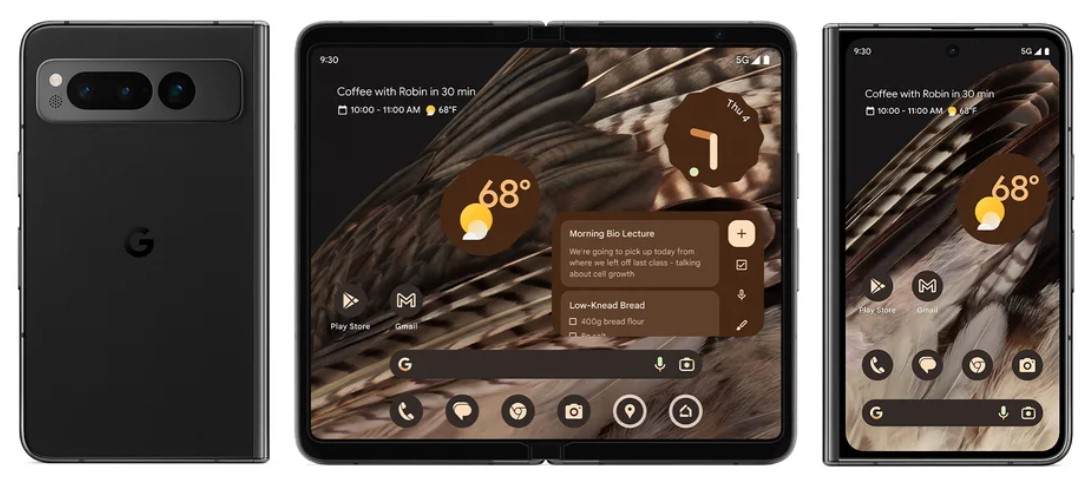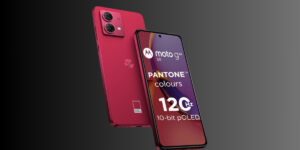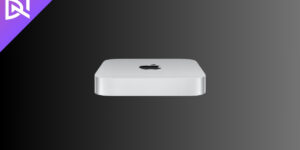The Pixel Fold received a mixed reception at launch for its hinge, but it’s practical and durable. Durability is one of the most important aspects of a foldable phone. Foldable phones have several high-end but sensitive components and are very fragile. A slab phone will probably perform much better if you accidentally drop it. To circumvent these problems, companies have come up with some solutions.
Oppo with the Find N introduced a waterdrop style design, which folds completely flat. There’s no gap when you fold the phone, and as a result, it doesn’t let in as much dust or particles. Since the screens on these foldable phones are mostly made of special plastic, any dust can easily scratch them up.
Samsung’s foldable phones, on the other hand, don’t completely fold flat. They leave a gap, and the Pixel solves this problem. The Pixel Fold also can’t completely unfold without applying some pressure, but Google made the hinge very durable.
Until this year, Samsung’s offerings were the only globally available and competitive offerings for foldable phones. However, Google, Motorola, and Oppo now challenge Samsung on all fronts. The Pixel Fold is another excellent offering.
Samsung’s foldable phones have one key advantage over many competitors – an IP rating or ingress protection. That gives us peace of mind and is useful. It’s also tricky to pull off on a foldable phone.

Is the Google Pixel Fold Waterproof?
- The Google Pixel Fold is not Waterproof but has an IPX8 water-resistance rating.
The Pixel Fold, according to Google, is, fortunately, IPX8-rated. This is good news for those with an IP rating as a must in their list of priorities. That’s the same rating that Samsung’s Galaxy Z Fold 4 has. It’s good that Google hasn’t cut any costs about ingress protection.
Google didn’t specify how long it was tested for, so we can assume it’s the typical IP68 standard. Most IP68-rated phones are tested for 30 minutes at a 1.5-meter depth, and it’s probably the same for the Pixel Fold. You might think that if you want to, you can take your phone out, unfold it, and use it in the rain without any problems.
However, we must remember that the IP68 rating does not guarantee waterproofing. Waterproof and water resistance are entirely different. The Pixel can only withstand fresh water in laboratory testing, which isn’t indicative of real-world tests.
Companies don’t reveal whether testing was done with Chlorine water, so we can’t tell whether this is safe to use in a pool. Theoretically, nothing should happen with fresh water. Also, companies do not cover any water damage in the warranty terms, so we don’t recommend completely submerging this or using it carelessly.
This doesn’t imply that the phone won’t survive if you expose it to water, but there’s a chance it may not. The IP rating is just there as peace of mind that if something happens accidentally, like water spilling or phone usage in the rain because of an emergency, phones with the IP rating will handle it better than other foldable phones without the rating.
How is IPX8 different from IP68?
IP68 is a vague term since phones like the iPhone 14, tested under 6 meters of water (unlike 1.5 on most phones) for 30 minutes, are also rated IP68 for ingress protection. The “6” here signifies protection against dust. Since foldable phones have many moving parts and hinges, getting dust protection certification is difficult.
IPX8 on the Pixel Fold means that the phone is still resistant to water but doesn’t have an official certification against dust. As foldable tech evolves, we’ll hopefully get dust protection.
Conclusion
The Pixel Fold is a compelling package for early adopters who want the Google software experience on a foldable phone. It’s also a practical option with a sturdy hinge and decent camera hardware for a foldable phone. It also has the IPX8 water resistance rating for durability.
However, the front bezels could’ve been slimmer, and the phone ships with the lackluster Tensor G2, made on Samsung’s ill-fated 5nm fabrication process. This poses performance problems, efficiency issues, and potential severe overheating since this is a foldable phone.










